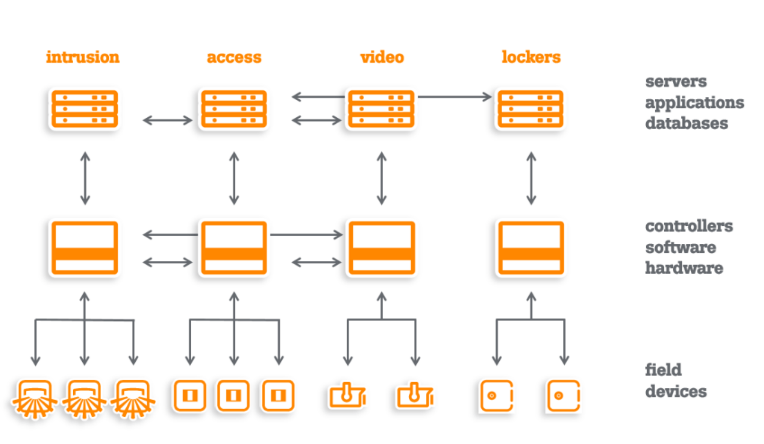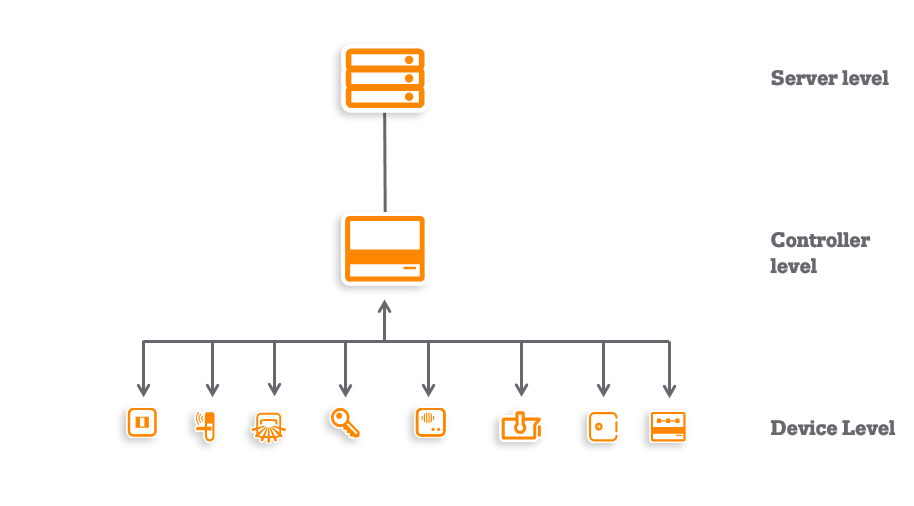- Artificial intelligence (AI)
- AI can boost surveillance by providing digital brains for digital eyes.
- Progress differs from industry to industry and from application to application.
- In IP video surveillance industry today, machine or deep-learning is mostly used for video analytics. The application will be driven by the most compelling use cases, not by the technology itself.
- Cloud and Edge computing
- Cloud computing is based on centralized computing in one or many data centres.
- Edge computing puts more data processing at the “edge” of the network, close to where the data is collected by the sensor and before it is transferred to the cloud.
- Cloud and edge computing will work in balance to the greatest benefit.
- This also facilitates intelligent analytics such as, People counting, Unauthorized access alerts, Statistics and analysis (traffic volume, movement, motion, etc.), VIP-detection, Perimeter protection, Aggression detection.
- Personalization vs. privacy
- Building trust in a digital world
- Valuable online services in exchange for handing over personal data.
- Used by for example Facebook and Google to increase the value of services through personalization.
- Trust between an organization and its customers is becoming an increasingly important and tangible asset.
- Cybersecurity
Awareness of emerging risks and how to proactively address them.
- Will never be solved, because cybercriminals will never stop trying to find and exploit vulnerabilities.
- More sophisticated attacks at a time when the number of connected devices is increasing.
- The fastest way to damage trust is through a cybersecurity breach.
- Environmental smart tech
- New types of sensors can more accurately measure environmental impact across an organization’s sites.
- Adds value to customers through efficiencies and cost savings.
- Will help them reach their environmental and sustainability goals.
- Sensor integration
- Combining and integrating sensors to prompt ‘smart’ actions.
- Consider the range of sensors that can be combined and integrated – from thermal to motion, from atmospheric to video.
- The ways in which they can be combined and the potential benefits are endless.
- Video surveillance and access control integration
Product vendors and systems integrators are working to bridge the gap between video surveillance and access control. This will provide users with a higher level of security and a more efficient and user-friendly experience. An integrated system allows you to see critical information from both systems in a single interface. The end goal may be operational efficiency both physically or virtually. For example, to make it easy and effective for an operator to verify that someone attempting to enter a location is properly authorized or to monitor networks and systems, such as IT personnel verifying that an employee attempting to log into a network is authorized to do so.
“In the past security systems operated independently of each other. This made integration more costly, less efficient, and a hassle to operate. In addition, every system was specified and installed by a different person: Architects chose locking hardware. Security consultants chose electronic access controls and monitoring services. The fire engineer always chose the alarm”.
An integrated security system takes multi-layered security systems and integrates them into a common platform. The centralization and resulting ease-of-use can be seen by comparing the two images below:


An Integrated Approach.
Why video surveillance and access control integration?
- Centralization
Multiple operations are centralized, which results in more efficient and effective security. This also grants an ease-of-use that reduces time spent training and becoming familiar with multiple systems and how they work together. Management does not have to speak to every area involved in an event. Instead, all relevant information is found immediately in one interface.
A centralized system also makes upgrades and training more efficient saving time and money. On top of that, it allows for more
- Efficiency
Surveillance and access control information can be viewed from a single interface at a work station or even on your smartphone with a simple app. The software and hardware work seamlessly together and the system is designed to be both more effective and easier to use. An integrated system also saves time by reducing time wasted learning how to operate multiple systems together. Once your system is connected, it will be less expensive for you to make upgrades. Integration is faster, more effective, more consistent, and more time- and cost-efficient.
- Real-Time Monitoring
An integrated system allows you to see everything at once, and this is not limited to one site. You can view access control information on the same interface as the video, rather than linking events and information later. This means you can react to situations as they happen. If you can address situations in
- Data Collection
A centralized system allows for more efficient data collection as well as improved security measures. This results in more effective identification of weaknesses such as doors where tailgating is common, or areas in a store where theft is more likely. Once these are identified you can quickly address the issues. An integrated system makes it easier to gather data which means more effectively solving security problems.
- Improved Safety
An integrated system improves safety and mitigates risk more effectively. By combining the information from video surveillance and access control systems you can address incidents as they arise. You can also have alarms or a PA system linked through the same system as video surveillance. Tailgating can be addressed immediately. Fires can be located and dealt with accurately and quickly. You can track people moving through a site with guaranteed accuracy. Doors can be locked or unlocked automatically or manually. Whether it’s following verified
